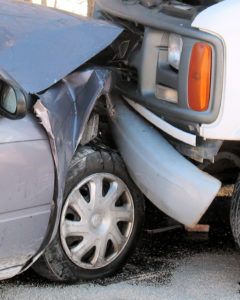National Distracted Driving Awareness Month
April 20, 2022 by Jean Humbrecht
National Distracted Driving Awareness Month (in April every year) promotes safe driving habits and educating Americans on the dangers of distracted driving. Many organizations focus on promoting safe and distraction-free driving during National Distracted Driving Awareness Month every year.
Traffic fatalities are increasing every year in Virginia and throughout the country. A major contributor to these crashes is distracted driving-whether it be distractions from cell phones, vehicle technology, other people in the vehicle, driving after drinking alcohol, eating and drinking while driving, grooming, adjusting music or volume, and the less obvious factors such as fatigue or stress, among other things. Teens are at an even higher risk of being involved in a car accident as a result of texting while driving and other distracted driving.
For more information on some of the causes of distracted driving in Virginia, see the Virginia Tech Transportation Institute article linked here.
Types of Distractions While Driving


National Distracted Driving Awareness Month Focuses on Promoting Safe and Distraction-Free Driving
There are four main types of distractions while driving-visual, auditory, manual, and cognitive.
Visual distractions are distractions caused by looking at something instead of the road. Auditory distractions are caused by hearing or listening to something that is not related to driving. Manual distractions include doing something with one’s hands other than using the steering wheel or a device in the car required for driving. Cognitive distractions include thinking about something that is not related to driving. For more information on the different types of distracted driving, read the article by National Today linked here.
Cell Phone Use Major Contributor to Distracted Driving
As one can assume, cell phone use is a major factor in traffic crashes and fatalities. It is hard to estimate exactly how many crashes are caused by distracted driving from cell phone use, because this would require a driver or passenger to report that the driver was using his or her cell phone. Studies have shown that even if drivers are looking at the road while talking on a cell phone (such as by using bluetooth technology), they are still less likely to see the road and potential hazards, due to their distraction.
Many people mistakenly think that because newer vehicles come equipped with technology for convenience that they are safer by using these features. This technology includes the ability to have the vehicle relay via audio a text that comes in or allows the driver to tell his or her phone through bluetooth capabilities to call a certain person so the driver does not need to take his or her eyes off of the road to look at his or her phone, search for a number, and dial.
Additionally, in-vehicle technology features such as rear cameras, motion-activated lights on mirrors, and in-vehicle GPS may provide more safety in some ways, but could be a false sense of security for drivers. Looking at the GPS on the screen in the vehicle instead of the road or relying on other technology that could malfunction may cause drivers to fail to fully pay attention to the road and hazards around them.
A person may even be more likely to be in an accident that is not their fault or be the victim of a crime if they are distracted in any way, including by cell phone use. This is because they are not paying attention to their surroundings and potential hazards, no matter how much they be making a conscious effort to do so.
In efforts to force driver compliance with safety measures, Virginia has recently enacted a law prohibiting having a handheld communication device in one’s hand while driving. This is frequently referred to as the Texting While Driving law. For more information on using handheld personal communication devices while driving, click here.
Ways to Prevent Distracted Driving
There are many ways drivers can reduce the risk of danger associated with distracted driving, such as using cell phone blocking apps that prevent incoming or outgoing calls or texts while the person is driving, pulling over to make a call or send a text, having a passenger send or respond to a text, putting the phone away while driving, driving at the speed limit, not driving after consuming alcohol, and continuing to look in rearview mirrors and blind spots instead of merely relying on technology safety and convenience features, among many other things.
***DISCLAIMER: THE MATERIAL AND INFORMATION CONTAINED IN THIS POST, ON ANY PAGES ON THIS WEBSITE, AND ON ANY PAGES LINKED FROM THESE PAGES, ARE FOR GENERAL INFORMATION ONLY AND NOT LEGAL ADVICE. YOU SHOULD CONSULT A LICENSED ATTORNEY IN YOUR JURISDICTION BEFORE RELYING ON ANY OF THE INFORMATION CONTAINED ON THESE PAGES. SENDING EMAIL TO OR VIEWING INFORMATION FROM THIS WEBSITE DOES NOT CREATE AN ATTORNEY-CLIENT RELATIONSHIP***
![]()
![]()
![]()
![]()
![]()
![]()
![]()
![]()
![]()
![]()
![]()
![]()





